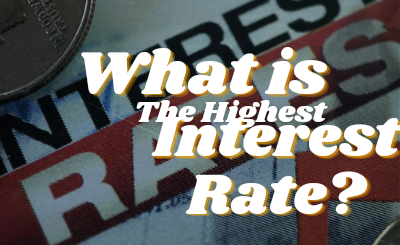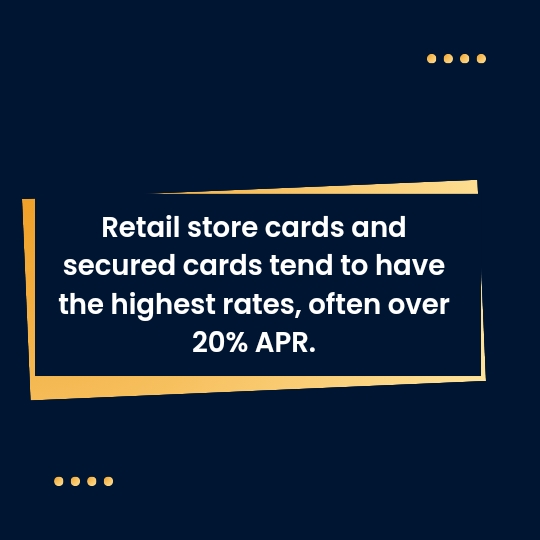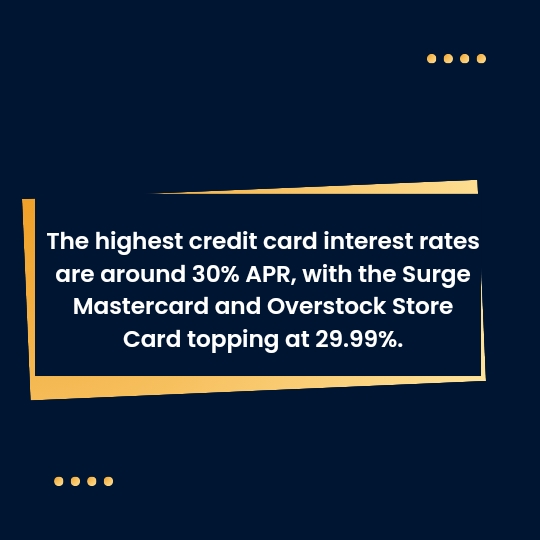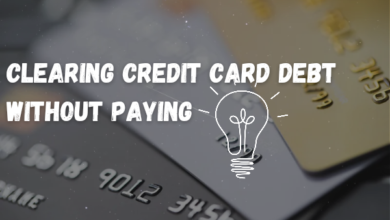What is the Highest Credit Card Interest Rate?

For anyone who wants to open a credit card account, finding the one which has a low credit interest is a priority.
But I’ve come to realize that understanding what a high credit card interest is, is another adventure on its own.
How does one tell if the interest rate is high or low? With interest rates on credit cards varying significantly, it can be confusing to determine which card actually charges the most.
In this post, we will try to cover the key details around credit card rates, discuss the current highest options, and provide tips to avoid excessive fees.
How to Raise Your Credit Score 100 Points in 30 Days
Understanding Credit Card Interest Rates
Before we go into the specifics around the highest interest rates, it’s helpful to create a background on some key concepts. This foundation will make the later sections more clear for you.

Table of Contents
What is APR?
APR stands for Annual Percentage Rate. This represents the yearly interest rate that is charged on any outstanding balances on your credit card.
Generally, credit cards have variable APRs, meaning they can fluctuate over time depending on economic factors.
The APR consists of the “prime rate” set by the Federal Reserve plus an additional amount that the credit card provider would charge you. Rates are expressed as a percentage figure.
Average Rates
The average credit card interest rate currently sits between 14% – 16% APR. This is what most consumers like you can expect to pay if you maintain balances and revolve credit on your cards.
However, for consumers with excellent credit scores above 740, many cards offer reduced promotional rates with APRs in the 10 – 12% range.
How to Access Your Carter Credit Card Account and Make Payments
Factors Influencing Your APR
If is pertinent to know that While the average may fall around 15%, your specific APR can vary quite a bit depending on these key factors listed below:
Credit score: The higher your score, the better rate offered to you
Type of card: You should know Rewards cards tend to charge higher rates
Introductory offers: Many cards offer 0% promotional rates for the first 12-18 months
Now that we’ve successfully covered some essential background, it is time to discuss the highest credit card rates.
How to Pay Your Hot Topic Credit Card?
What are the Highest Credit Card Rates?
As we’ve mentioned above, while average credit card rates sit in the mid-teens, some cards charge significantly more.
Generally, these ultra-high-rate cards fall into two main categories:
Retail Store Cards

If you’ve applied for a credit card at a retail clothing store, appliance/technology store, or superstore, the chances are that you’ve used retail store cards before.
These cards tend to offer you instant credit in exchange for astronomical interest rates.
For example, the Credit One Bank Platinum Visa card charges 25.24% APR on purchases. The Overstock Credit Card from Synchrony Bank charges 29.99% APR. Many other retail cards charge rates over 20% and even up to 30% APR.
However, the main benefit of these cards is instant approval and the ability it gives you to make purchases immediately.
But the rates are extremely high compared to standard credit cards.
Secured Cards
Secured credit cards require you to make a cash deposit or security funds that act as collateral on the account.
They are often used by applicants with poor/fair credit to help them rebuild their score. But the rates on secured cards tend to be higher than traditional options as shown below:
The Surge Mastercard charges you an APR of 29.74%
The Fit Mastercard from Bank of Missouri offers rates at 29.99%
So secured cards are helpful for improving credit but they are at the consequence of high interest fees.
What is the Absolute Highest Credit Card Rate?
Relying on our research across thousands of credit card offerings, the current credit card with the absolute highest interest rate is shown below.
The Surge Mastercard at 29.99% APR
This narrowly edges out the Fit Mastercard and Overstock Store Card at the same 29.99% maximum.
Secured cards are designed to help subprime borrowers rebuild credit and it certainly accomplishes its mission.
But if you are in desperate situations rebuilding credit, you should be prepared for interest charges quickly compounding at nearly 30% annually.
Tips to Avoid High Interest Charges
Though the above cards certainly top the market in terms of rates, no consumer should settle for excessive fees that compound uncontrollably.
Below we give to you 5 tips on how to avoid high credit card interest charges:
- Pay Your Balance in Full Each Month
One of the simplest ways to avoid high rates is by Paying off your statement balance by the due date of each billing cycle. This allows you to leverage the convenience of cards without financing charges building up and becoming a problem for you.
- Seek Low Promotional Rates
Another way is to Look into cards offering 0% introductory rates on purchases and balance transfers.
You can save substantially on interest while paying down debt during the promotional period.
- Improve Your Credit
You can also Work on increasing your credit score over time through responsible actions, the reason is because the higher your score, the better rate you can qualify for with lenders.

- Consider Alternatives
It is advisable that you evaluate more affordable lending options through credit unions, you can try peer-to-peer sites, and other channels. The rates may beat traditional high-rate credit cards.
- Contact the Issuer
The last option we have is that If you’ve been hit with a high penalty rate, you can call the issuer to politely ask for relief. They may agree to reduce the charges to retain you as a customer.
The key is evaluating all your financing options and finding the best fit for your situation that avoids piling on interest rate fees.
You can watch this video:
Conclusion.
While the highest credit card rate currently stands at 29.99% APR (achieved by both the Surge Mastercard and Overstock Store Card), you have multiple ways to avoid excessive interest charges.
This includes by paying balances responsibly each month, asking issuers for relief from fees, also by transferring debt to low promotional offers, and raising their credit score over time, you can qualify for much lower rates.
I hope this guide gave you a helpful understanding of credit card rates as much as it helped me.



